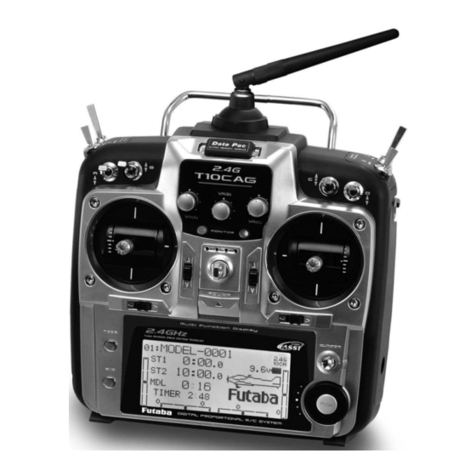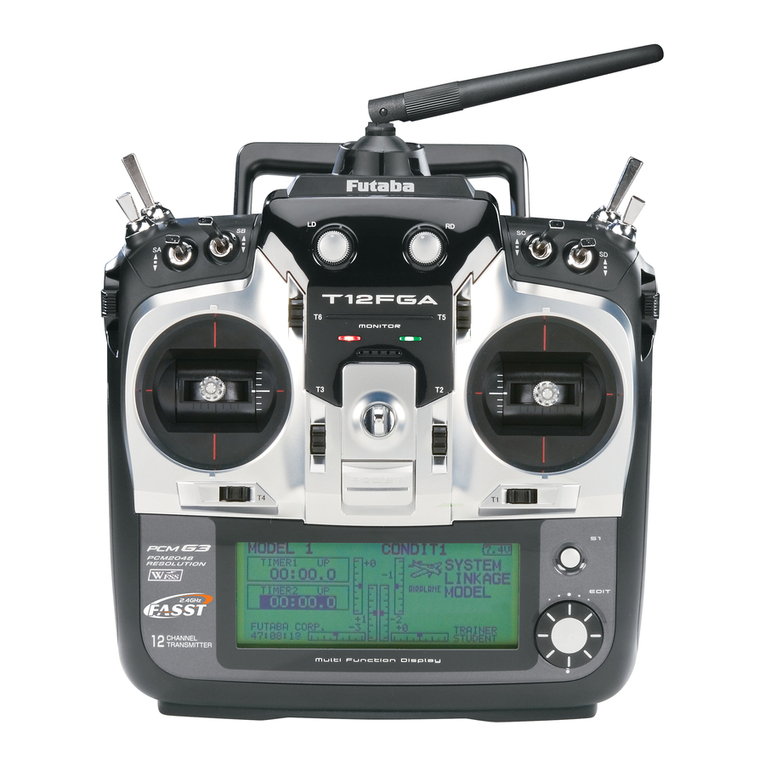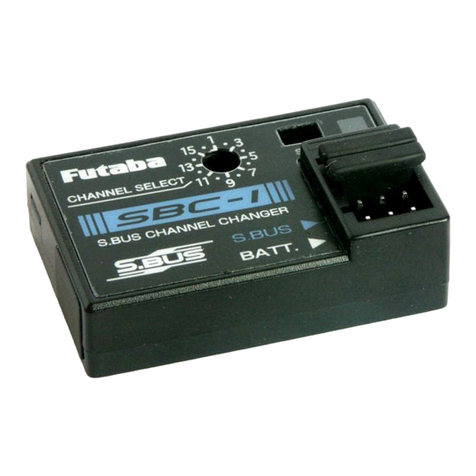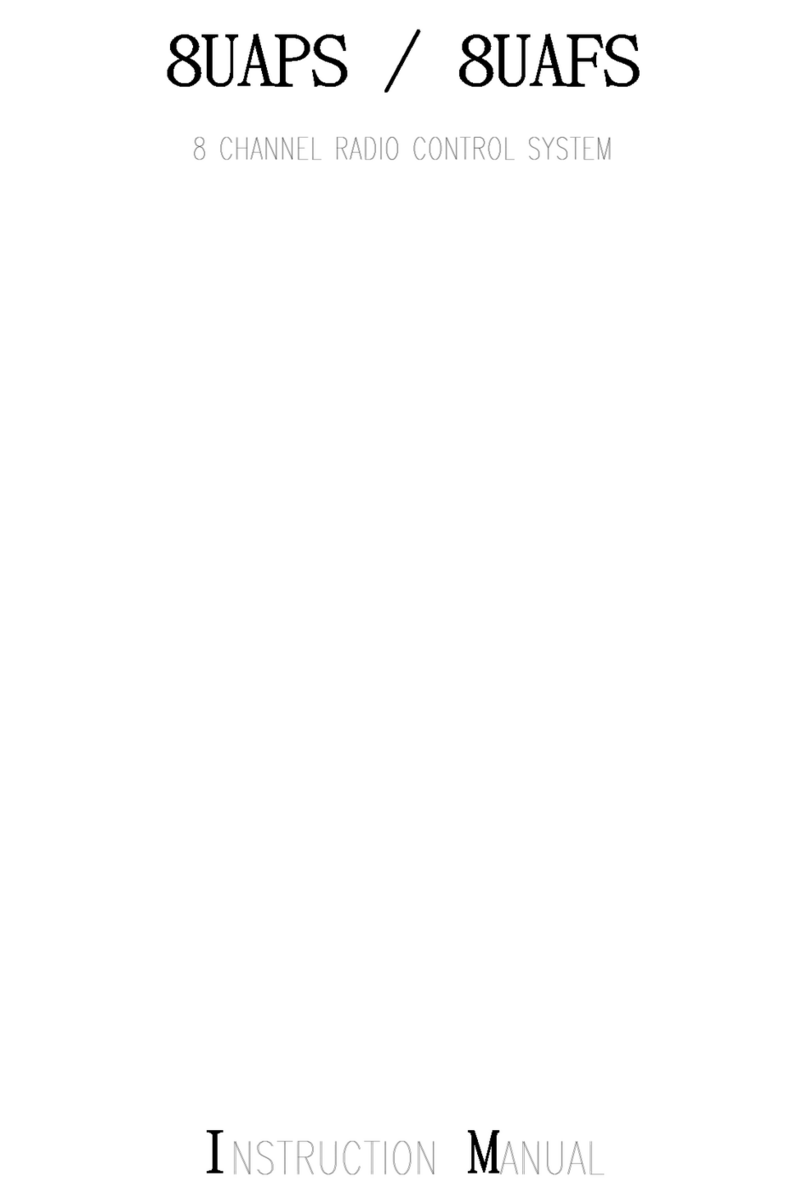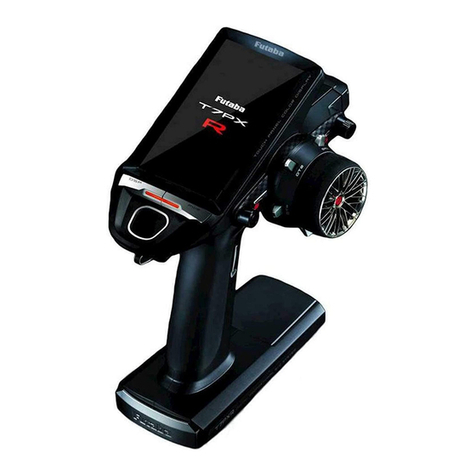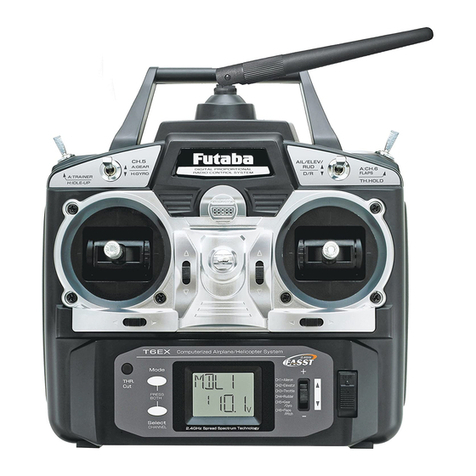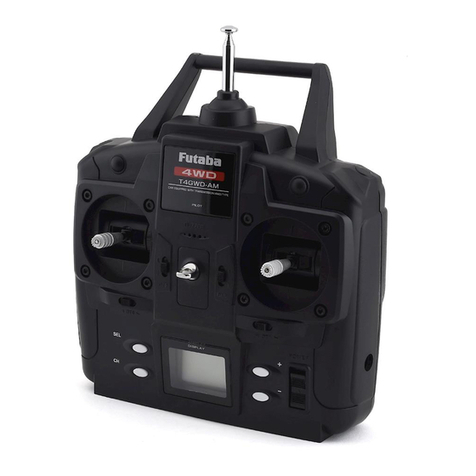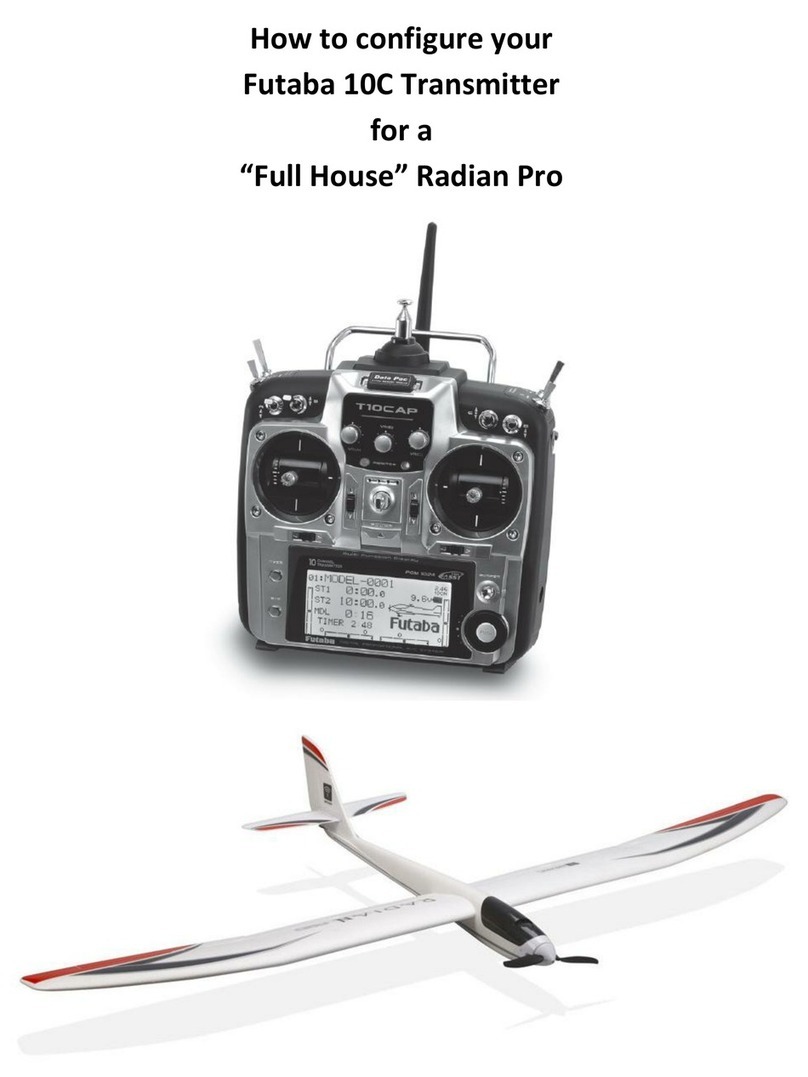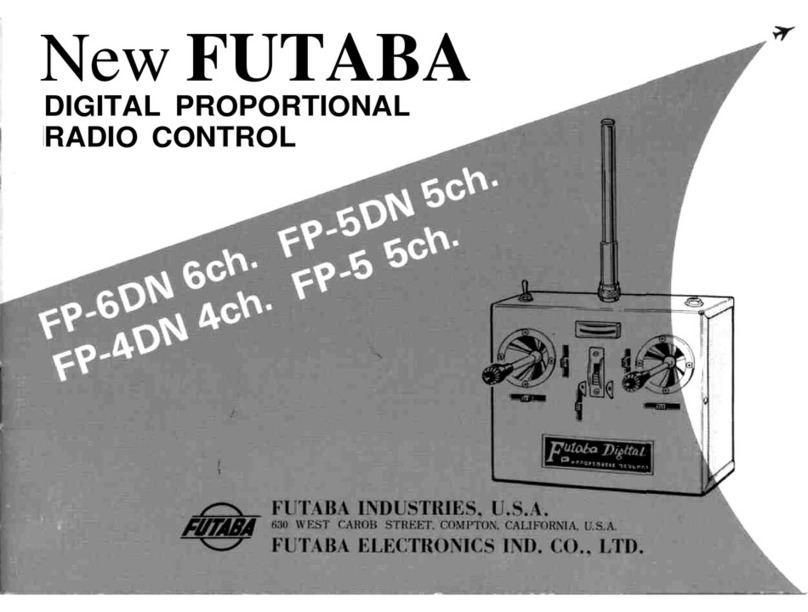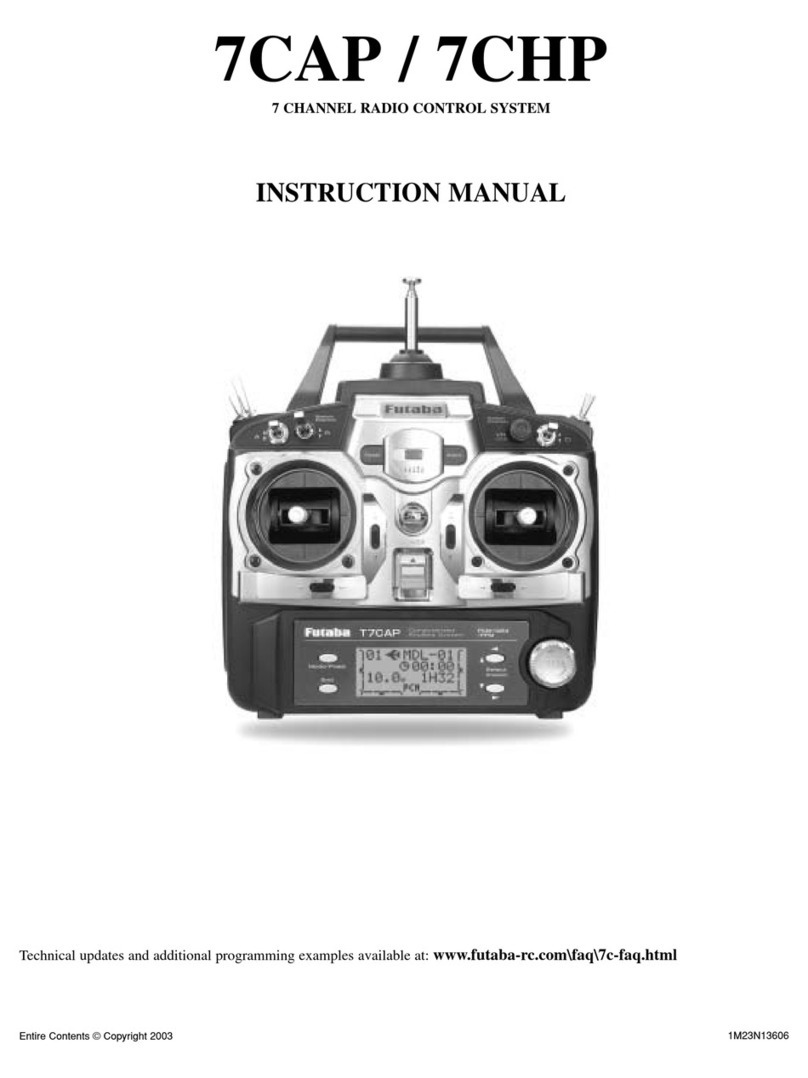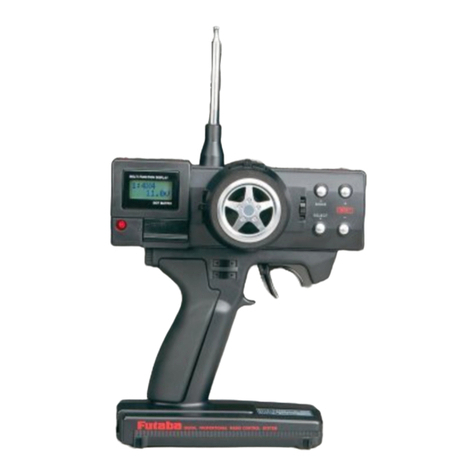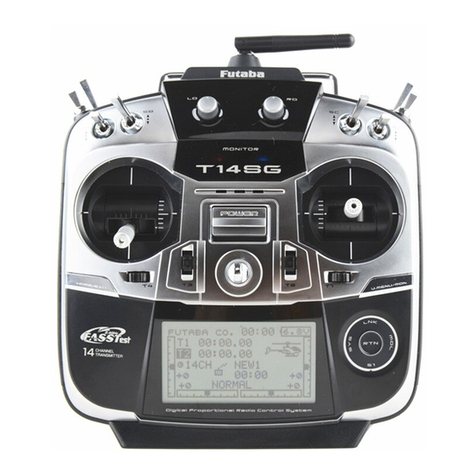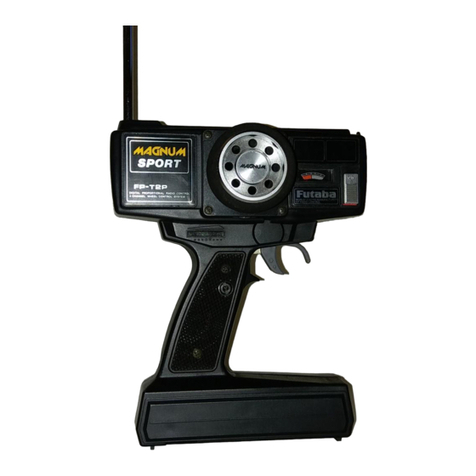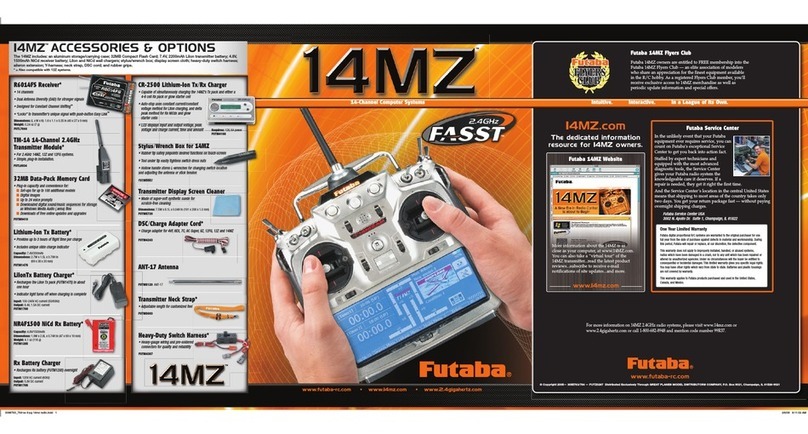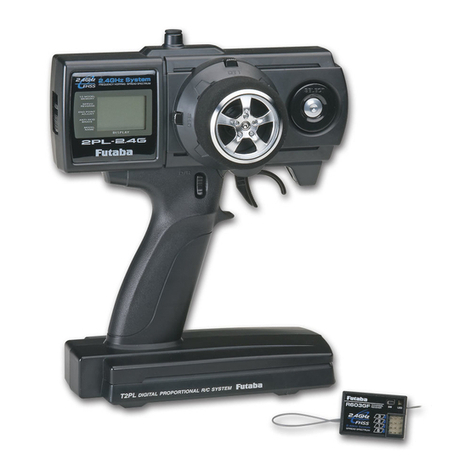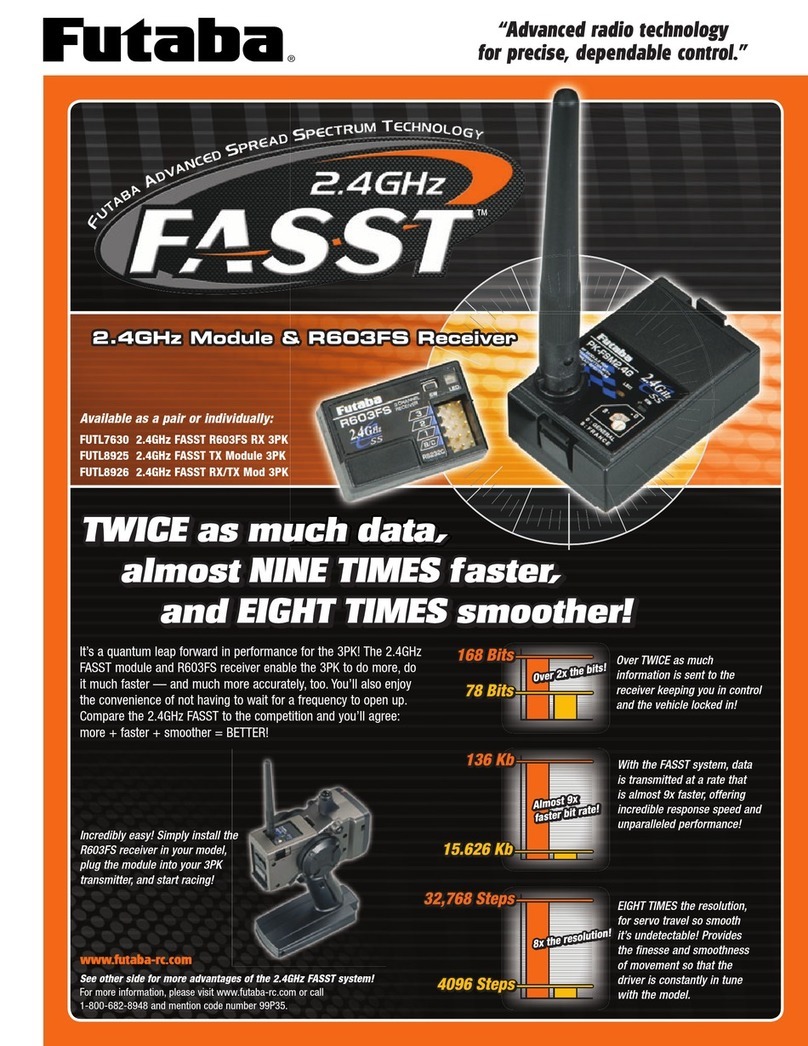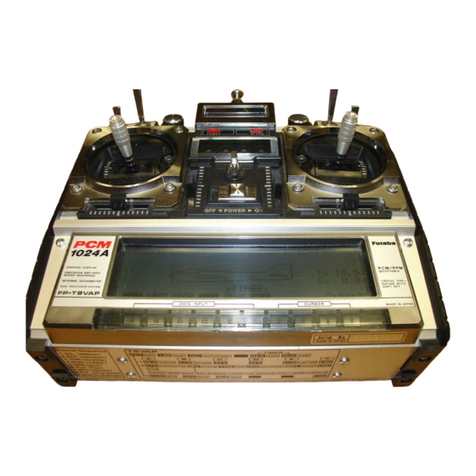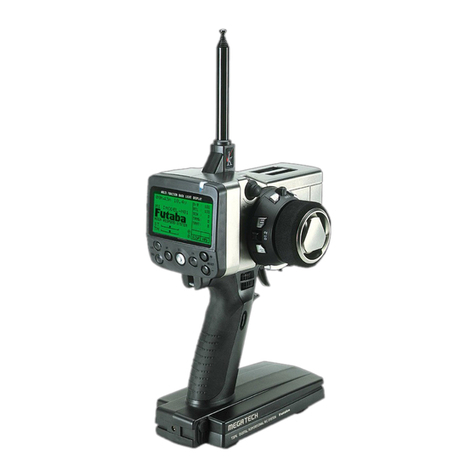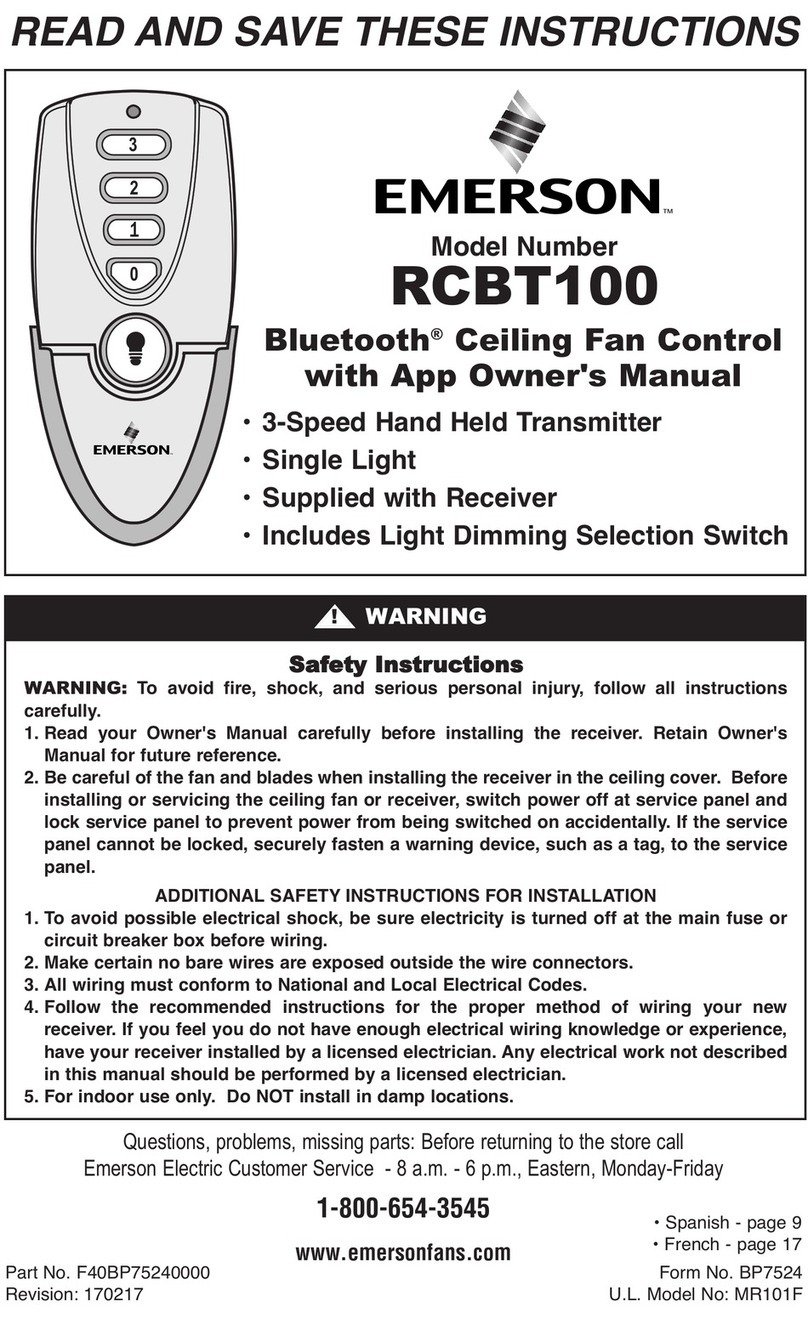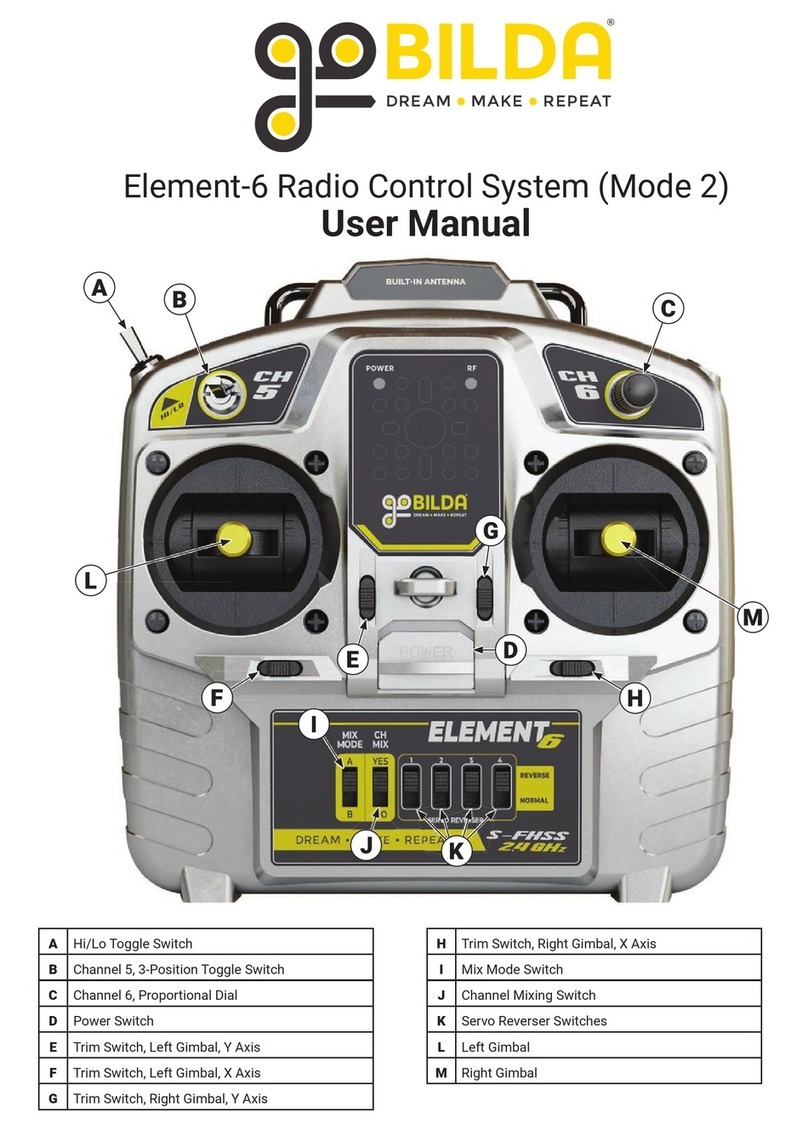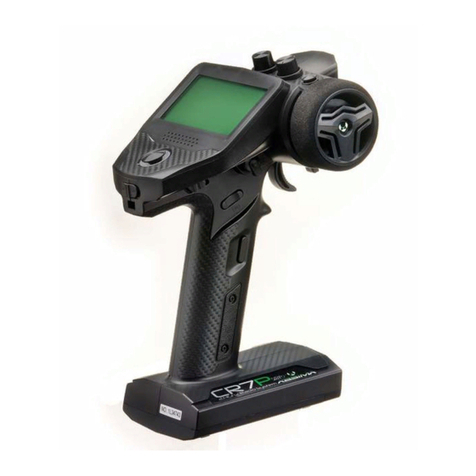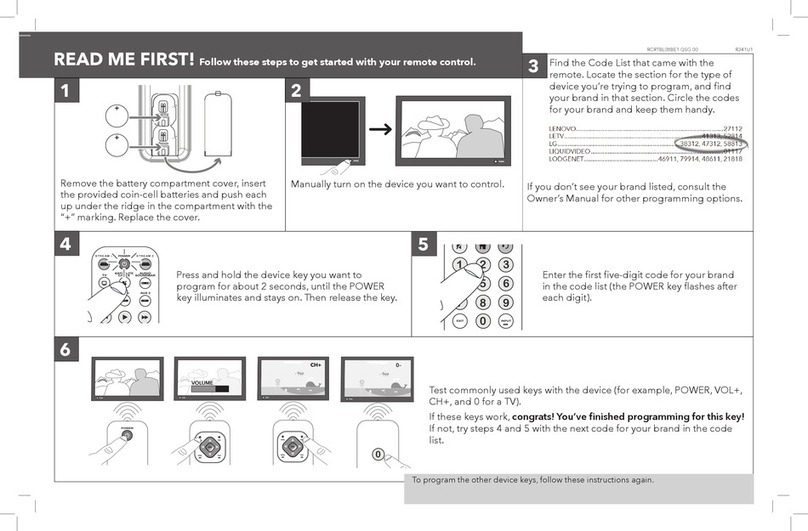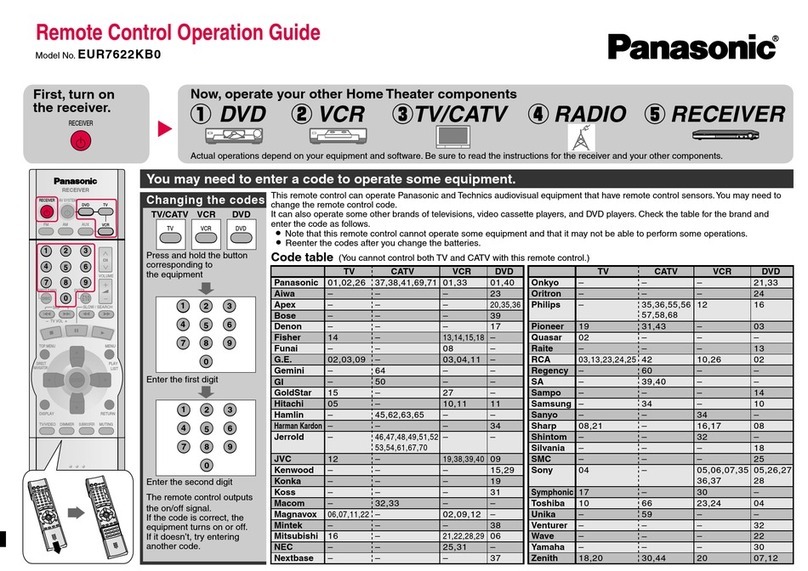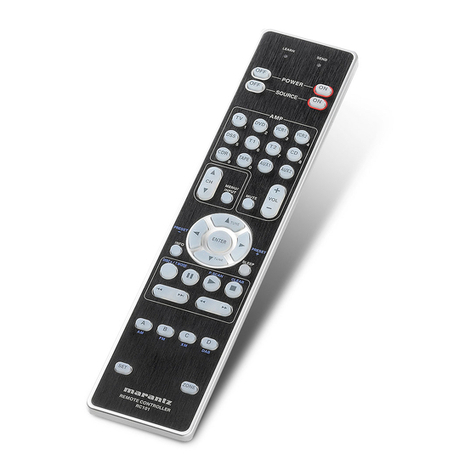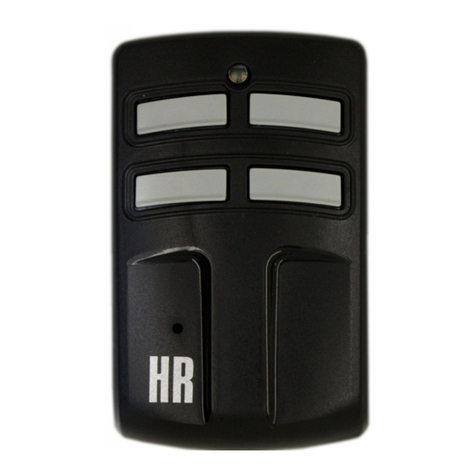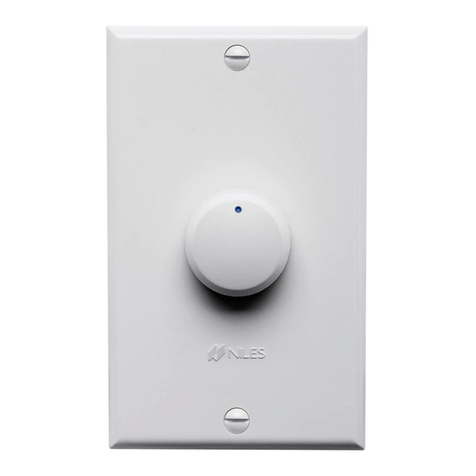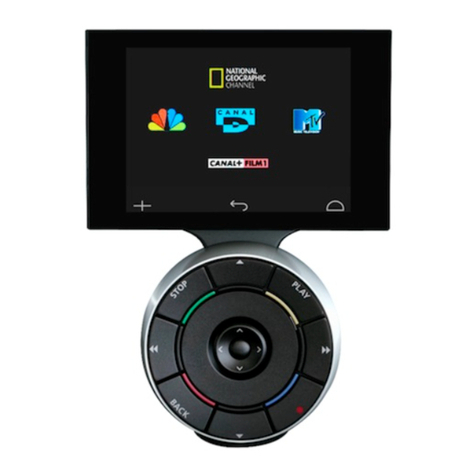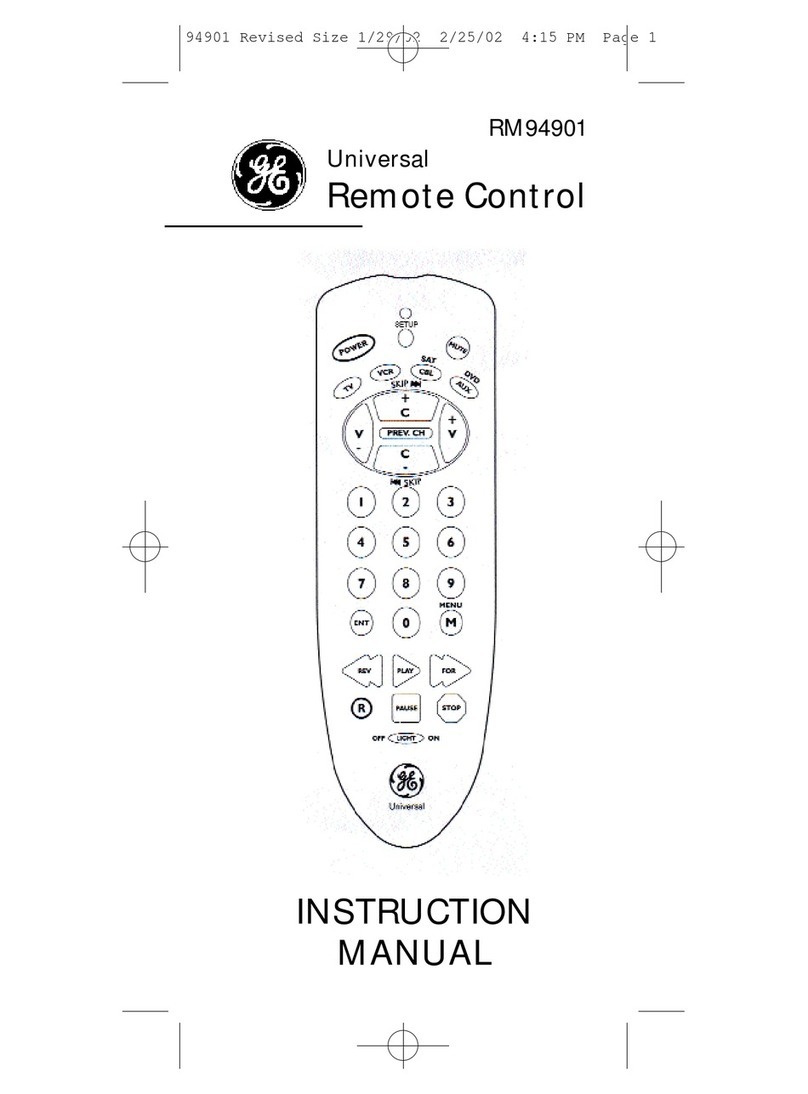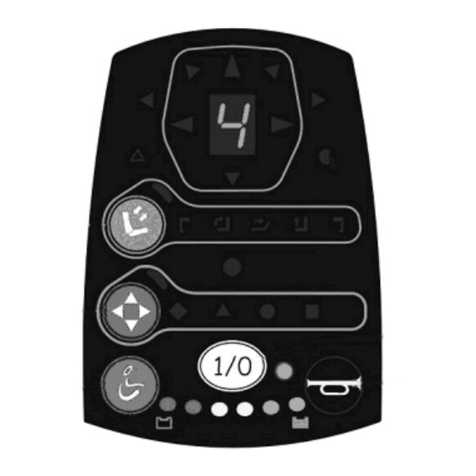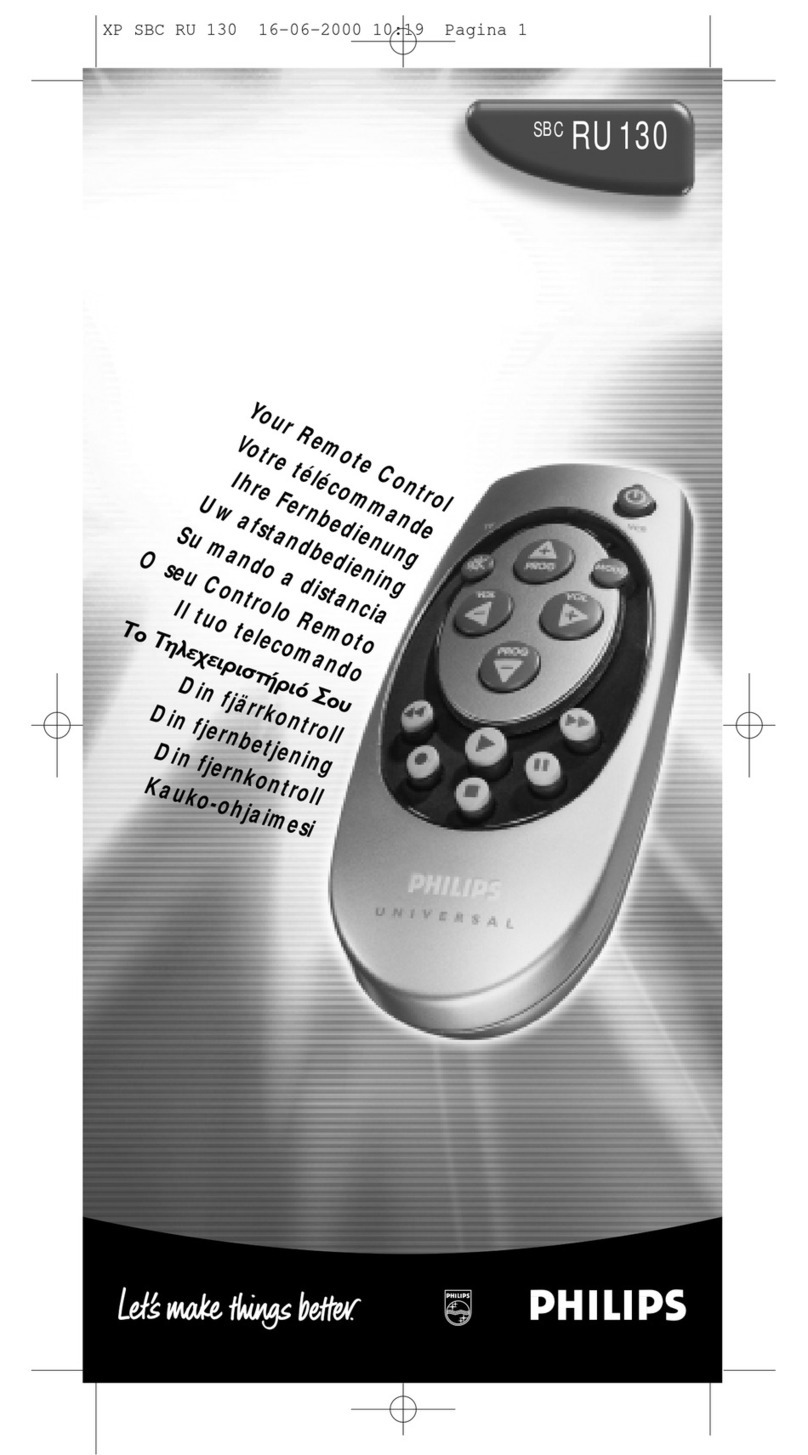
3
GLOSSARY
It will be helpful to understand the following terms before reading the rest of the manual. The terms are not in alphabetical
order, but are in a logical order that prepares the reader for understanding the next term.
Reversing (servo reversing) -
Reversing (servo reversing) -
A function that allows the user to determine the direction of response of each servo. If, after
hooking up the servos, a control on the model responds in the wrong direction, the user may change the servo's direction so
the control responds correctly.
Throw -
When speaking of a control surface (such as an elevator or aileron), the throw is
the distance the surface moves. Control surface throw is usually measured at the trailing
edge of the surface and is expressed in inches or millimeters. The model in the diagram has
1/2" [13mm] of up elevator throw. Throw can also refer to the distance a servo arm (or
wheel) travels.
Dual rate (D/R) -
On the 6EXAP the dual rate switch allows you to instantly switch, in flight,
between two different control throws for the aileron, elevator and rudder. Often, different
control throws are required for different types of flying. (“Low”throws may be required for
flying at high speeds where the model’s response becomes more sensitive, and “high”
throws may be required for aggressive aerobatic maneuvers or landing or flying at lower
speeds where the model's response becomes less sensitive.)
End point adjustment (E.P.A.) -
End point adjustment (E.P.A.) -
Sets the overall, maximum distance the servo rotates in either direction. (No matter where
the dual rates are set, the servo will never travel beyond the limit set by the end point adjustment.)
Exponential -
Normally, servos respond proportionally to control stick input from the transmitter (e.g., if the stick is moved
halfway, the servo will move halfway). However, with “exponential,”the servo can be made to move more or less than initial
stick movement (less servo movement is more common). Exponentials are commonly used to “soften,”or decrease initial
servo travel for the ailerons, elevators and rudder. This way, initial control stick inputs from the pilot result in small servo
movement for a smoother flying airplane.
(Dual rates adjust the amount
of servo travel. Exponentials determine where
most of the travel will occur.)
Mixing -
Two (or more) servos can be made to operate together either by mechanically joining the wires (with a Y-connector)
or by electronically “joining”them through programming functions in the transmitter. When servos are electronically joined via
programming, they are said to be “mixed.”Unlike joining servos with a Y-connector, when servos are mixed electronically they
can be made to move in opposition. Additionally, each servo’s end points can be independently set.
CONTENTS AND SPECIFICATIONS
CONTENTS AND SPECIFICATIONS
Transmitter: T6EXAP
T6EXAP Transmitter with programmable mixing and 6-model
memory.
Transmitting on 35, 40, 41, or 72 MHz band.
Operating system: 2-stick, 6-channel system
Modulation: FM(PPM) and PCM
Power supply: 9.6V NT8S600B Ni-Cd battery or 12V alkaline battery
Current drain: 250mA
Receiver: R127DF or R136F
Receiver: R127DF or R136F
R127DF/R136F narrow band, FM 7/6 channel receiver.
Receiving on 35, 40, 41, or 72 MHz band.
Type: FM, Dual conversion/FM, Single conversion
Intermediate frequencies: 455kHz, 10.7MHz/455kHz
Power requirement: 4.8V or 6V
Current drain: 9.5mA @ 4.8V
Size: R127DF- 1.39x2.52x0.82" (35.3x64.0x20.8mm)/
R136F- 1.31x1.98x0.71" (33.4x50.3x18.1mm)
Weight: R127DF- 1.5oz (42.5g) / R136F- 0.98oz (27.8g)
Servos: S3004 or S3003
S3004 ball bearing/S3003 standard servo with mounting
hardware and servo arm assortment
Control system: Pulse width control,1.52ms neutral
Power requirement: 4.8 or 6V (from receiver)
Output torque: 44.4oz-in [3.2kg-cm] @4.8V
Operating speed: 0.23sec/60˚@4.8V
Size: 1.59x0.78x1.41" [40.4x19.8x36mm]
Weight: S3004- 1.3oz (37.2g) / S3003- 1.3oz (38.0g)
Servos: S3151
S3151 Digital standard servo with mounting
hardware and servo arm assortment
Control system: Pulse width control,1.52ms neutral
Power requirement: 4.8 (from receiver)
Output torque: 43.1oz-in [3.1kg-cm] @4.8V
Operating speed: 0.21sec/60˚@4.8V
Size: 1.59x0.79x1.42" [40.5x20x36.1mm]
Weight: 1.48oz (42g)
Other components:
Switch harness
9"[200mm]aileron extension cord (to facilitate quick
connecting and disconnecting of aileron servo with
removable wing)
Instruction manual
*Specifications and ratings are subject to change without notice
